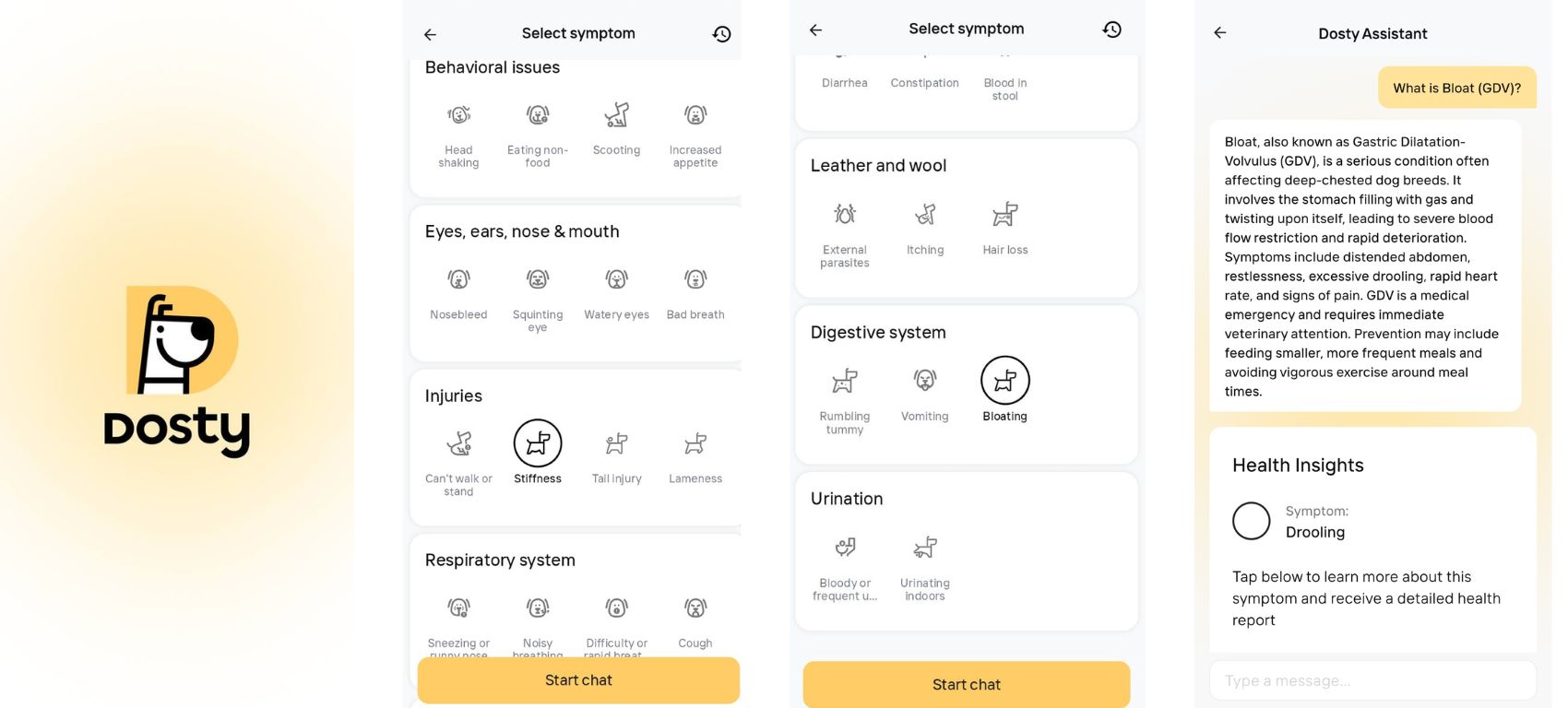On this page
How to Spot Early Symptoms of Dog Ear Infections?
Dog ear infections are one of the most commonly diagnosed problems in a veterinary practice. Early detection not only rescues your dog from discomfort, it can prevent permanent damage and costly treatments. The American Kennel Club estimates that 20% of all dogs will suffer from some type of ear ailment at some point in their lives.
Initial symptoms might seem slight, but any mild itching, or strange smell should not be overlooked. Being able to identify these signs can make treatment easier and more successful.
Worried about ear infections❓
Catch early warning signs fast with the Dosty App, monitor symptoms, receive expert-backed reports, and respond with confidence.
What Are the Most Common Symptoms of Dog Ear Infections?
Dog ear infection usually starts with some well-known behavioral and physical signs. These symptoms usually suggest irritation, infection, or foreign object in the ear canal.
- Excessive shaking do to pain or irritation.
- Ear scratching or head shaking because of irritation.
- Bad smell from the ears, usually yeast or bacteria.
- Earflap or ear canal redness or swelling.
- Brown or yellow or bloody discharge.
- Tenderness or soreness when the ear is touched.
- Head tilt or loss of balance in later stages.
Observing head shaking or ear smell❓
Check your symptoms in real-time with the Dosty App, receive expert health advice and know when you should take action.
What Happens If You Don’t Treat a Dog Ear Infection?
An untreated ear infection may cause permanent damage. An untreated infection is also likely to become more virulent and resistant with time.
- Long-standing inflammation involving a thickening of the ear canal.
- Ruptured ear drum, with the possibility of permanent hearing loss.
- Inner ear infections that cause vestibular symptoms such as dizziness.
- Diseases which are painful necessitating the surgery of an ear canal.
- Higher cost of vet bills from emergency surgeries.
- Behavioural changes, such as anxiety or aggression as a result of pain.
VCA Animal Hospitals caution that if infections are untreated, the result can be Total Ear Canal Ablation (TECA), a last-ditch surgical effort in which the canal is removed completely.
Do not let surgery become the answer❗
Watch Dosty App’s video guides for ear care, Learn the right cleaning steps and catch infections early with our smart ear care symptom checker.
Protect your dog’s ears, begin with Dosty.
How to Treat a Dog Ear Infection?
Treating a dog ear infection begins with identifying the cause, be it bacterial, yeast, or mites. Veterinarians usually diagnose the condition by performing an otoscopic examination and cytology test.
It may be that your dog will need his ears cleaned of debris and discharge with a veterinary recommended solution. This is followed by treatment with targeted topical preparations such as antibiotic/antifungal drops. Oral medications, such as corticosteroids or systemic antibiotics, may be recommended for more serious conditions.
Appropriate treatment also entails addressing underlying pathology, such as allergic reactions or immune dysfunction. This medication must be taken for the full course of therapy and even if your child feels better earlier.
How to Prevent Dogs from Getting Ear Infections?
It takes regular hygiene, some environmental considerations and nutritional support to avoid ear infections. Predisposed dogs should receive regular aural exam and life modification.
Regular ear examination on a weekly basis will help you to monitor your dog's ear health and keep his ears clean. But if you’ve got your dog out and he’s swimming and the ears become wet, you can use a gentle ear cleanser that’s vet-approved as part of grooming. Dogs with excessive ear hair may also need a trim to allow air to circulate.
Diet plays a vital role. Omega-3 fatty acids, zinc, and vitamin E help keep the immune system and skin healthy. Food allergy often serves as a perpetuating factor for chronic infection, detection and removal of allergens is important.
Environmental moisture also is a consideration. Dog that living in coastal or moist atmospheres such as Florida or Oregon are more susceptible because of trapped moisture. The American Veterinary Medical Association reports that there is a 32% higher incidence of infection in areas with high humidity.
FAQs About Dog Ear Infections
1. Can dog ear infections heal without treatment?
No, most infections require a trip to your veterinarian in order to be resolved completely.
2. Are some breeds more prone?
Yes, dogs with floppy or woolly ears are at greater risk.
3. Do food allergies cause them?
Often. Allergens, such as chicken or wheat, can cause inflammation.
4. Can I clean dog ears at home?
Of course, but only with vet-approved solutions.
5. Do infections change behavior?
Yes, pain can lead to aggression or to lethargy.
Conclusion – How to Keep Your Dog’s Ears Healthy Long-Term
The care of the ears starts with prevention and knowledge. There is never reason to ignore symptoms such as smell, scratching or head shaking at early stages. Regular ear examinations, grooming routines, and good diet are your first line of defence.
Don’t try home remedies or wait to seek treatment, as that can lead to permanent damage and higher costs. If your dog has a history of ear problems, regular care and veterinary exams are necessary.
📲 Track symptoms, get expert tips and keep your dog’s ears healthy with the Dosty App.



